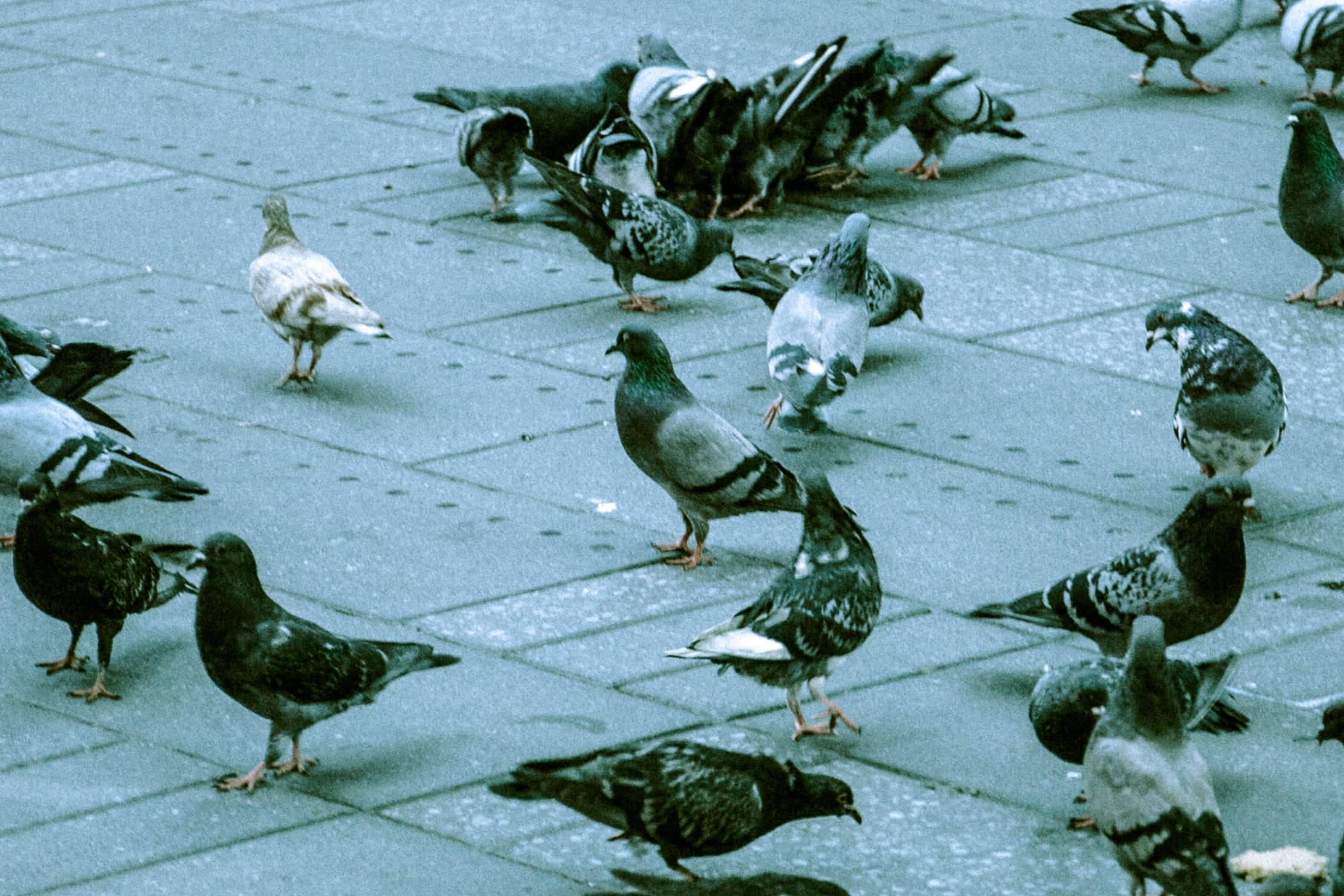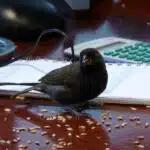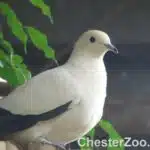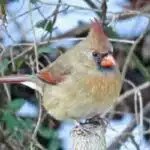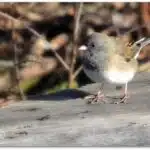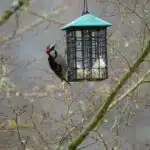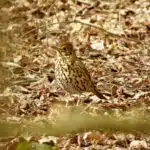As winter’s chill settles in, it can be hard for humans to stay warm. But for birds, keeping toasty is a matter of survival. How do they manage it? It’s like their feathers are made of magical insulation that helps them brave even the coldest weather. It’s almost as if ducks don’t freeze!
It’s a wonder how birds can survive the winter with so little effort. How do they stay so warm and cozy when temperatures plummet? Is there a special trick or technique they use to avoid freezing? From migratory patterns to fluffing up their feathers, there are several ways birds cope with winter weather.
In this article, we’ll explore why ducks don’t freeze and how birds keep themselves safe in the winter months. We’ll look at the strategies they employ, from migration to changing up their diet, and discuss how you can help them stay comfortable while temperatures drop. Let’s dive into the fascinating world of bird behavior during the colder seasons!
The Science Behind Bird Insulation
Like a finely tuned machine, birds use the science of insulation to remain warm and cozy during the winter months. A flurry of feathers, downy and soft, provides an incredibly effective barrier against the cold. This natural insulator encases them like a thermal blanket, allowing them to brave even the most frigid temperatures without freezing.
The ducks we so often see paddling around in icy waters are no exception. Their thick layer of feathers is composed of two parts: an outer coat of waterproof quills and an inner lining of down that traps heat next to their bodies. The feathers are also specially designed with tiny air pockets that help keep warmth from escaping into the atmosphere. Even when covered in snow or submerged in water, these air pockets protect their skin from coming into direct contact with cold surfaces.
Additionally, ducks have developed unique behaviors that further aid their temperature regulation – such as huddling together for extra warmth or fluffing up their feathers for additional loftiness. These strategies work together to ensure that despite the chill of winter, our feathered friends remain comfortable and happy all season long.
How Feathers Help Birds Stay Warm
To illustrate how feathers help birds stay warm, let’s look at the example of a duck. Ducks are known for their ability to brave cold winter weather and remain comfortable. This is thanks largely to the incredible insulation provided by their feathers. Ducks have two types of feathers: down and contour. The down feathers are soft and fluffy, providing a layer of insulation next to the bird’s skin. Contour feathers create an outer waterproof layer that helps keep the heat in, while also protecting against wind and rain.
The structure of a feather also plays an important role in keeping birds warm. Each feather is made up of several layers of barbules and barbicels that provide additional insulation by trapping air between them and creating tiny pockets of warmth around the bird’s body. Additionally, when ducks preen their feathers regularly, they’re able to fluff them up and improve their insulation even further.
In addition to providing insulation, feathers can also help birds stay aerodynamic in flight so they can conserve energy more easily – another key factor in keeping them warm during the winter months. With all these features combined, it’s no wonder why ducks don’t freeze during the coldest days!
Different Types Of Feathers And Their Usefulness
Coincidentally, there are many different types of feathers that play a part in how birds stay warm. These feathers range from complex and downy varieties to simple and flat ones. Each type has its own unique characteristics and purpose when it comes to keeping the bird cozy during the winter months.
The most common type of feather is the contour feather, which provides insulation and a waterproof barrier against the elements. These feathers also create air pockets, trapping heat against the bird’s body. Down feathers are incredibly soft and fluffy, helping to trap even more warmth for greater insulation. Filoplumes are long, stiffer feathers that can detect air currents; they help the bird steer itself in flight without expending too much energy. Lastly, bristles are thin, stiff hairs that provide extra protection from moisture or cold winds.
All these different types of feathers have their own special features that help keep birds warm in wintertime. They can also be adapted to fit different climates; some species may develop larger amounts of down feathers in colder temperatures while others may grow thicker contour feathers instead. With these specialized adaptations, birds can stay comfortable no matter what mother nature throws at them!
Birds’ Specialized Adaptations To Cold Climates
Many birds have specialized adaptations to survive the cold winter months. Feathers are a critical part of these adaptations, helping them to stay warm and keep out the chill. Ducks have some unique characteristics that allow them to survive in colder climates, such as their water-resistant feathers and their ability to use water as insulation from the cold air.
Ducks’ feathers are made up of several layers, with a top layer of downy plumage that helps trap heat and keep them warm. This layer is also waterproof, allowing ducks to stay warm even when they’re swimming in cold waters. Additionally, ducks can use their webbed feet to help insulate themselves from the cold ground by standing on snow or ice.
Finally, ducks are able to fluff up their feathers and create an extra layer of insulation against the cold weather. This allows them to stay warmer while they’re roosting or preening themselves during the winter months. By using these special adaptations, ducks are able to thrive in colder climates without having to worry about freezing.
This section has discussed how birds have adapted to survive in cold climates by using specialized feather characteristics. Now we’ll look at why ducks don’t freeze during the wintertime despite living in icy temperatures.
Why Ducks Don’t Freeze In Cold Weather
Ducks have a few strategies for staying warm in cold weather. First, they have downy feathers that provide insulation and keep heat close to their bodies. Second, ducks have a unique layer of fat beneath their skin that helps them retain warmth. Lastly, ducks don’t freeze because of the special adaptations in their feet and legs.
The feathers of most ducks are patterned with alternating dark and light colors. The dark colors help absorb warmth from the sun while the lighter colors reflect sunlight away from the bird’s body. This keeps the duck’s body temperature regulated so it doesn’t get too hot or too cold. Additionally, ducks typically fluff up their feathers to create air pockets which helps insulate them from the cold temperatures outside.
Lastly, ducks don’t freeze because they have specialized adaptations in their feet and legs such as webbing between their toes, thicker scales on their feet, and downy feathers on their legs. The webbing increases surface area which allows more heat to be dispersed into the water when swimming or standing on ice or snow. Thick scales on a duck’s feet help protect them from frostbite by providing insulation and better gripping power on slippery surfaces like ice or snow. Finally, downy feathers on a duck’s leg help trap air next to its skin to keep it warm even when standing still in cold weather conditions.
Thanks to these specialized adaptations, ducks can stay warm all winter long no matter how low the temperatures drop!
How Ducks’ Feet And Legs Help Them Stay Warm
When it comes to staying warm in the winter, ducks have a few tricks up their sleeve. Not only do they have insulating feathers that help keep the heat in, but their feet and legs also play an important role. These features allow them to survive even the coldest of temperatures without freezing.
One way ducks stay warm is by having webbed feet. This type of foot helps them swim faster and more efficiently, but it also works as an insulation layer. The webbing between toes traps air bubbles that help retain warmth, while the extra skin on their legs acts as another layer of protection. Ducks also have a unique circulatory system which helps them regulate their body temperature even when conditions are very cold outside.
In addition, ducks can use their beak and neck feathers to create a pocket of air around themselves when they dive underwater or settle down for the night. This creates an extra layer of insulation against cold temperatures and helps prevent them from freezing during winter months. All these adaptations work together to give ducks the ability to stay relatively warm and comfortable regardless of how chilly it gets outside.
How Ducks’ Insulating Feathers Work
Ducks have evolved to stay warm in the winter, and one of their most important adaptations is their insulating feathers. To illustrate this, consider a duck who is standing in a pond on a chilly February morning. As temperatures drop, the duck’s feathers trap air near its skin and form an effective barrier against the cold. This insulation keeps the duck warm even when temperatures outside dip below freezing.
In addition to these insulating properties, ducks have specialized feather structures that help them conserve heat. These special feathers are called pennaceous feathers and they contain barbules which interlock together like Velcro to increase the surface area of each feather and improve insulation. The barbules also trap air between them and help create a layer of insulation around the duck’s body which helps prevent heat loss.
Finally, ducks can fluff up their feathers when it gets cold in order to further protect themselves from the chill by creating more air pockets between their feathers for additional insulation. This helps keep them warm even on freezing winter days, allowing them to survive until spring returns again.
Why Ducks Have Specialized Tail Feathers
Beautifully, ducks are equipped with numerous specialized features to stay warm in the winter. From their insulating feathers to their specialized tail feathers, they are truly a marvel of nature.
Humorously, ducks’ tail feathers have a twofold purpose: keeping them warm and helping them look good. These feathers act as an insulation layer over the duck’s body, trapping heat and preventing heat loss. The duck’s oil-coated feathers also allow them to float on water and repel moisture, which helps keep them dry and stop further heat from escaping.
Moreover, ducks often tuck their feet into their body when they sleep or rest in cold temperatures. This position helps conserve heat by reducing the amount of surface area exposed to the air; thus, less heat is lost through convection cooling. All these features demonstrate how adaptable ducks are when it comes to surviving cold winter months! With these tactics in mind, let’s explore how else ducks keep warm in winter – namely, how their feet and legs help keep them warm.
How Ducks’ Feet And Legs Help Keep Them Warm
Did you know that on average, ducks can survive in water as cold as -4°F? This is just one of the many tricks ducks have for staying warm in the winter. In this article, we’ll explore how ducks’ feet and legs help them keep their body temperature up when temperatures dip.
Ducks have a few adaptations that help them stay warm during the winter months. One of those is webbed feet. Ducks’ feet are covered with scales that contain many veins that allow the birds to circulate blood more quickly than other animals. This helps to keep their feet from freezing by ensuring they don’t lose too much heat to the cold ground. Additionally, ducks also have special feathers on their legs called “downy feathers”. These downy feathers insulate their legs and help to keep warmth close to their bodies.
So not only do ducks have webbed feet and downy feathers, but they also use a process called counter-current heat exchange to regulate their body temperature. This process involves exchanging heat between the arteries and veins in the ducks’ legs so that warmer blood can flow through their bodies faster, helping them stay warm in frigid temperatures.
The combination of these three strategies enables ducks to remain comfortable even in very cold temperatures – allowing them to go out and search for food without risking hypothermia or frostbite! As we move on from this section, let’s look at how ducks’ fat plays an important role in keeping them warm during winter weather.
How Ducks’ Fat Is Used To Stay Warm
It’s commonly accepted that ducks have an advantage when it comes to staying warm in the winter. But how exactly do they do it? One way is through the use of their fat, which is stored for insulation and energy during colder months. This theory can be seen in action when you observe a duck’s body – their feathers are dense and fluffy, with a layer of fat underneath that helps keep them insulated from the cold temperatures.
Fats provide ducks with additional insulation by trapping heat within the feathery layers. The fatty layer also helps to make their feathers waterproof. This ensures that ducks don’t become wet and cold in cold weather conditions, allowing them to remain warm even in the harshest of winters. Furthermore, if the temperature drops too low, ducks can fluff up their feathers to create an extra layer of insulation that traps heat closer to their bodies.
This combination of fatty layers and fluffed-up feathers provides warmth without having to expend too much energy or burn too many calories. And because they don’t need to move as much during cold months, they’re able to conserve more energy which can be used for other activities such as migration or finding food sources during the winter season. By using this combination of insulation techniques, ducks are able to stay warm no matter what Mother Nature throws at them!
These strategies help explain why ducks are so well-adapted for surviving in colder climates – they’re able to conserve heat and stay insulated from the elements while expending as little energy as possible! With this knowledge we can see how important it is for us humans to learn from nature and recognize how different species adapt for survival in different environments.
How Ducks Conserve Heat In The Winter
It’s almost impossible to believe, but ducks manage to stay warm in the winter despite the freezing temperatures that can come with it. The secret? How ducks conserve heat in the winter! Unbelievably, these hardy little creatures have evolved and adapted over time to be able to survive even in some of the coldest climates.
Their feathers and layers of fat act as natural insulation, creating an air pocket between their skin and the outside air that helps keep them warm. Ducks also have a special ability to fluff up their feathers when they get cold, trapping more heat under their feathers and keeping them cozy. Additionally, ducks can generate heat through shivering, which allows them to maintain a consistent body temperature even when temperatures drop below zero.
But perhaps most impressive is how ducks use their internal structure to help keep themselves warm — they have unique blood vessels near their feet that allow them to cool off quickly if necessary, but also insulate them from cold weather conditions. Ducks also have very efficient hearts that pump blood quickly and efficiently throughout their bodies so that the warmth is spread evenly throughout. All of these things work together to help ducks remain comfortable even in the harshest winter weather.
How Ducks’ Internal Structure Helps Keep Them Warm
Ducks have some unique features that help them survive the cold winter months. Their internal structure is one of these attributes, and it helps keep them warm despite the frigid temperatures. Ducks have small pockets of air in their feathers called “preen glands,” which are filled with oil. This oil helps to insulate the ducks from the cold and keep their body temperature up.
In addition to preen glands, ducks also have a thick layer of fat beneath their skin that helps trap heat and keeps their body temperatures steady. This layer of fat can be seen as ripples underneath their feathers when they move around in the water or on land. The extra insulation provided by this fat layer allows ducks to stay warm even when swimming in icy waters during the winter.
Ducks also have a unique way of fluffing up their feathers to trap additional warmth against their bodies. By puffing up their feathers, ducks create an additional barrier between themselves and the cold air or water around them, helping them stay warm during cold weather.
These adaptations allow ducks to brave through freezing temperatures without having to worry about freezing too much. They can go about their daily activities without worrying about being too cold and can even enjoy a dip in icy waters if they choose!
Other Adaptations That Help Ducks Stay Warm In The Winter
It’s incredible how ducks are able to stay warm during the winter months. In fact, an estimated 90% of duck species migrate south when the temperatures drop. So, how do they manage to stay warm? Other adaptations that help ducks stay warm in the winter include waterproof feathers and a layer of down feathers for insulation.
Waterproof feathers help ducks stay dry and prevent heat loss from their bodies. The outer layer of feathers is made up of long, slender shafts with a waxy coating that repels water like rain or snow. These feathers also trap air close to the body so that body warmth isn’t lost. This helps keep ducks both dry and warm in cold conditions.
Down feathers are located beneath the waterproof outer layer and are shorter and fluffier than the top layers. They provide extra insulation by trapping even more air close to the body, acting as an additional barrier against cold temperatures. Ducks can also tuck their feet into their chest fluff to further conserve heat. All these adaptations help ducks survive in freezing climates and keep them safe from the cold winter weather.
How Birds Seek Shelter From The Cold
Did you know that one-third of all bird species migrate during the winter? Every year, birds seek shelter from the cold to keep them warm. Not only do birds find shelter in tree branches and thickets, but they also use their feathers to provide insulation. In this article, we’ll discuss how birds seek shelter from the cold in order to survive winter.
The first thing birds do is try to find a place with minimal exposure to wind and rain. This could be anywhere from dense vegetation, such as trees and shrubs, to buildings or other structures. Birds also look for places that have enough food available throughout the winter so that they don’t have to expend too much energy searching for it. For example, some species are attracted to bird feeders placed in yards and gardens by humans during the winter months.
Birds will also huddle together with other members of their species in order to conserve heat and energy. The tight formation provides a layer of insulation between them and the harsh temperatures of winter. The outermost birds facing the coldest temperatures tend to fluff up their feathers making them even thicker for extra warmth. Ducks are particularly adept at this since their feathers are specially designed for water-repellency which is great for keeping out the cold air as well.
Now that we understand how birds stay warm in the winter, let’s take a look at what you can do to help them beat the chill!
What You Can Do To Help Birds Stay Warm In The Winter
In order to help birds stay warm during the winter, there are a few things you can do. First of all, you can provide birds with shelters that will protect them from the cold. By making or buying birdhouses, you can give birds a safe place to rest and keep out of the elements. You can also create brush piles near your birdhouses as an additional shelter opportunity for birds.
Another way to help is to make sure they have plenty of food available. During the winter months, food sources may become limited and without a steady supply of food, birds may not have enough energy to keep them warm. Providing bird feeders full of high-energy snacks like sunflower seeds or suet will ensure they are getting enough nutrition.
Finally, you might consider adding some water features in your yard that don’t freeze over in colder temperatures. Birds need access to fresh water year-round, so if ponds and other water sources freeze during the wintertime, having a heated birdbath would be beneficial for them. Doing these simple things will make sure that our feathered friends stay protected throughout the colder months.
Frequently Asked Questions
How Do Birds Regulate Their Body Temperature?
Irony can be a powerful tool, and it’s only fitting that when discussing how birds stay warm in winter, we’d use it. After all, doesn’t the thought of birds shivering in the cold seem outrageous? Believe it or not, this is not the case. Birds have evolved sophisticated techniques to regulate their body temperatures and combat the cold.
A bird’s feathers are its main defense against the cold. They provide an insulating layer that traps air close to its body. This air helps keep them warm while they are roosting or flying in cold conditions. Ducks have an extra advantage: they have preen glands which secrete oil onto their feathers. This creates a waterproof barrier that prevents water from seeping through and chilling them further. Additionally, some ducks have webbed feet which act as another insulation layer that helps keep their bodies warm without requiring too much energy expenditure.
Birds also rely on behaviors to stay warm during the winter months such as fluffing up their feathers to trap more air and using body heat generated from exercise like flapping their wings or hopping around. Through these methods, birds are able to survive in even some of the most frigid climates without freezing!
How Do Different Types Of Birds Survive In Cold Climates?
It’s a coincidence that the coldest of winter days bring an extra flurry of activity to our backyard bird feeders. While we’re all bundled up in scarves and coats, ducks, geese, and other birds have adapted over time to survive even the harshest winter climates. But how exactly do different types of birds stay warm in the cold?
To answer this question, it’s important to understand how different species are adapted for various environments. Ducks and geese, for example, have a thick layer of down feathers that trap air against their skin and help keep them insulated from the cold. Additionally, they have access to open bodies of water that don’t freeze over in colder temperatures. This allows them to preen their feathers and maintain their body temperature even in frigid conditions.
Other birds use a technique called “regional heterothermy” which helps them conserve energy by reducing heat loss from their extremities like wings and legs. This process involves slowing down blood supply to vulnerable areas so that they don’t lose as much heat while keeping their core body temperature constant. Birds also rely on huddling together or roosting in groups during cold weather to share warmth with one another.
Birds may be small but they have developed some incredibly impressive adaptations to help them survive winter weather! From thick layers of insulative feathers to regional heterothermy techniques, these feathered friends are able to brave even the most extreme temperatures so they can continue enjoying the sweet seeds at our bird feeders throughout the year!
What Other Methods Do Birds Use To Stay Warm In The Winter?
When winter approaches, birds must use different strategies to keep warm. One of the most common methods employed is fluffing up their feathers to create an insulating layer of air around their bodies. Ducks, however, have a unique way of surviving the cold temperatures.
By taking advantage of their waterproof feathers, ducks hold air close to their skin and can trap body heat in the process. The air acts as an extra layer that helps manage the heat generated by their bodies and prevents them from freezing in the winter. This is why ducks don’t need to rely on other methods like fluffing up their feathers in order to stay warm.
But what other techniques do birds use to regulate their body temperature during winter? They may seek shelter near sources of heat such as heated buildings or campfires. Some species also go into a state known as torpor, where they lower their metabolism and slow down all physiological processes in order to conserve energy and generate less heat when temperatures drop below a certain point. Birds can also huddle together for warmth or find places with little wind exposure so they don’t lose too much body heat.
These are just some of the ways birds cope with cold weather during wintertime – each species has its own adaptations that help it survive the chill!
How Are Ducks’ Special Adaptations Advantageous In Cold Weather?
Wrapped in the icy embrace of winter, ducks appear unfazed by the relentless chill that blankets their environment. But how do they stay so warm? It’s all thanks to their special adaptations which make them well-suited to survive winter’s coldest days.
From their feathers to their feet, ducks have a few tricks up their sleeve that keep them from freezing during the harshest months. Their dense plumage traps heat close to their body and creates an air pocket which helps insulate them against the chill. Additionally, ducks’ webbed feet possess blood vessels which help them retain heat. This adaptation enables them to stand or swim in icy waters without getting too cold.
The combination of these features makes ducks truly remarkable creatures – capable of withstanding extreme temperatures and adverse weather conditions with ease. What’s more, these adaptations enable ducks to continue living life as normal throughout winter, allowing them to feed and breed unhindered by the cold!
How Can Humans Help Birds Stay Warm In The Winter?
As the winter chill begins to set in, many of us may overlook the plight of our feathered friends. While birds have evolved some unique adaptations to help them survive the cold, humans can also lend a helping hand to make sure they stay warm and healthy.
Take ducks for example; their feathers are specially designed to trap air and provide insulation from the cold. A thick layer of downy feathers beneath their top layers helps maintain warmth and a waterproof coating on top keeps out moisture. In addition, they often huddle together in groups to keep warm. But while these adaptations can help, there are other ways humans can assist.
One example is by providing food sources such as birdseed or suet in areas where birds congregate. This not only gives them the necessary nutrition they need but also helps them create more body heat through digestion. We can also set up birdhouses or nesting boxes that are insulated with natural materials like hay or leaves and offer shelter from wind and rain so they don’t get wet and cold. Birdbaths should be kept clean so that birds have access to fresh water during winter months as well as heated bird baths so that frozen water sources are no longer an issue in freezing temperatures. Lastly, building brush piles out of sticks and logs is another way to create a safe space for birds to roost overnight when temperatures drop below freezing.
By taking steps like these, we can help ensure our feathered friends remain warm and healthy throughout the winter months – no matter how cold it gets outside!
Conclusion
The winter can be a difficult time for birds and other animals, but they have evolved special adaptations to help them survive. Understanding how birds regulate their body temperature and use different methods to stay warm helps us appreciate the complexity of nature. Ducks are particularly adapted to cold climates due to their thick down feathers and water-repellent oils. By understanding these adaptations, we can help our feathered friends thrive in the winter months by providing food, shelter, and water.
Every animal has its own unique way of surviving in the cold winter weather. Birds are no exception, with many species able to maintain adequate body heat throughout the season. From fluffing up feathers to gather extra warmth to migrating south for warmer climates, birds have developed amazing strategies for enduring chillier temperatures. Ducks are especially suited for colder conditions thanks to their downy layers and waterproof oils that protect them from freezing temperatures.
Despite all of their hard work, birds still need our assistance during the winter months. By providing food sources and shelter from harsh winds, we can ensure that our feathered friends remain safe and healthy until springtime arrives. With our help, these clever creatures can better cope with frigid temperatures while continuing to provide us with beauty and joy throughout the year!

